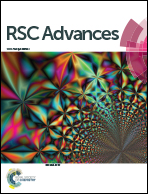Tuneable magnetic properties of carbon-shielded NiPt-nanoalloys
Abstract
Spherical NiPt@C nanoalloys encapsulated in carbon shells are synthesized by means of high-pressure chemical vapour deposition. Upon variation of the synthesis parameters, both the alloy core composition and the particle size of the resulting spherical NixPt1−x@C nanocapsules can be controlled. The sublimation temperatures of the Ni- and Pt-precursors are found to be key to control the alloy composition and diameter. Depending on the synthesis parameters, the diameters of the cores are tuneable in the range of 3–15 nm while the carbon coatings for all conditions are 1–2 nm. The core particle size decreases linearly upon increasing either of the sublimation temperatures while the Ni and Pt content, respectively, increase linearly with the related precursor temperature. Accordingly, the magnetic properties of the nanoalloys, i.e. magnetization, remanent magnetization and critical field, are well controlled by the two sublimation temperatures. As compared to bulk NiPt, our data show an increase of Stoner enhancement by nanoscaling as ferromagnetism appears in the Pt rich NiPt nanoalloy which is not observed for the related bulk alloys. The magneto-crystalline anisotropy constants K are in the range of 0.3–4 × 105 J m−3 underlining that NiPt@C is a stable, highly magnetic functional nanomaterial.


 Please wait while we load your content...
Please wait while we load your content...